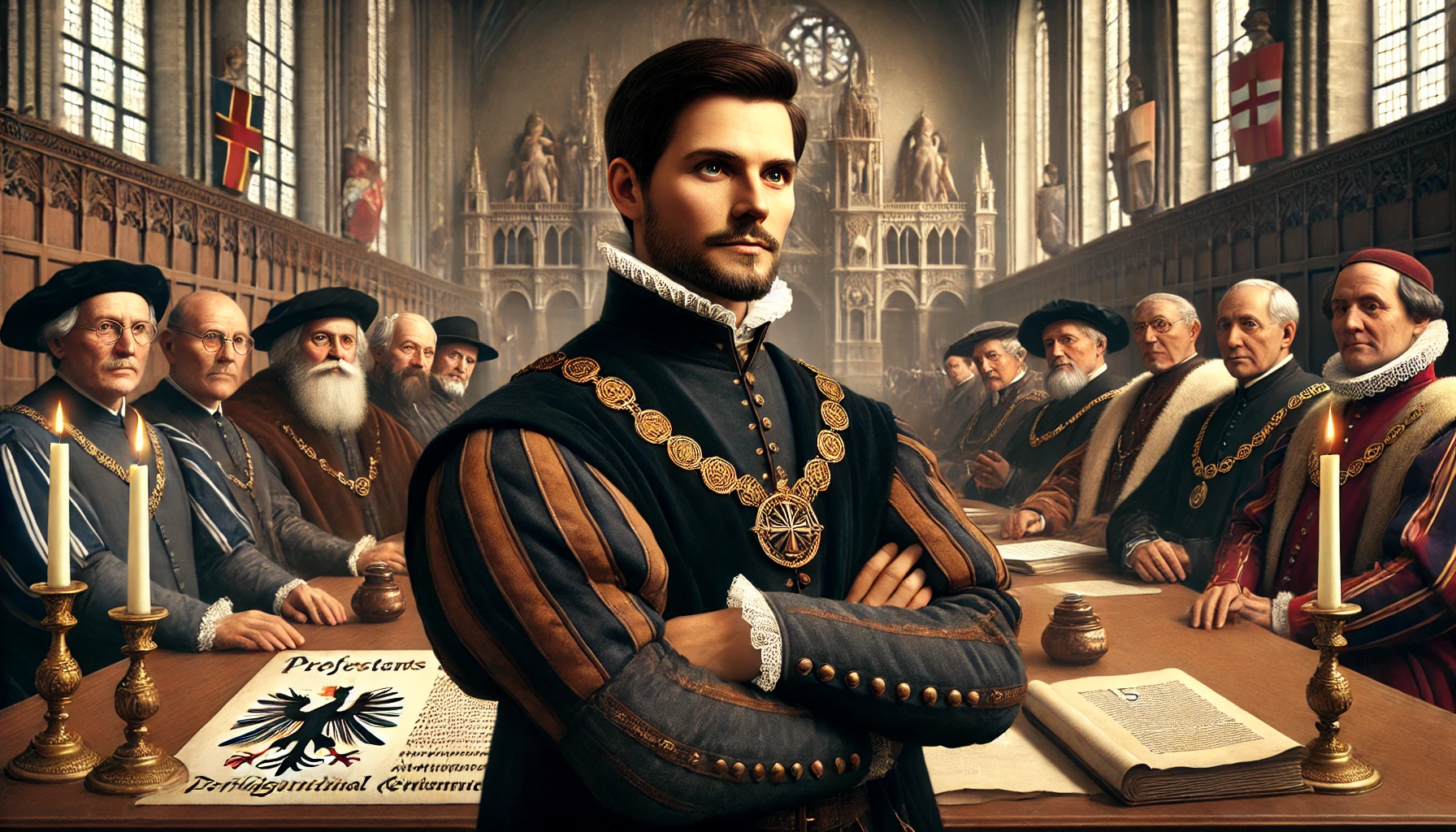If you’re wondering what makes “Heinrich Servais Germany 1555” a significant topic, you’ve come to the right place. Heinrich Servais may not be as widely recognized as Martin Luther or Charles V, but he played an essential role in shaping religious freedom in 16th-century Germany. Amidst political unrest, heated debates, and, dare we say, some rather grumpy emperors, Heinrich stood out as a fearless leader. But what exactly did he do that left such an impact?
In this blog, we will explore the life and contributions of Heinrich Servais, his role in the Peace of Augsburg, and how he helped shape the concept of religious tolerance during one of Europe’s most tumultuous periods. So grab a cup of coffee—because Heinrich’s story is one worth sipping over!
1. Historical Background of 1555 Germany
1.1 The Context of Religious Turmoil
Germany in 1555 was, to put it mildly, like a family dinner that had gone wrong—Protestants on one side, Catholics on the other, each glaring across the table. The Reformation, initiated by Martin Luther in 1517, had already created deep divisions. Local rulers found themselves in the difficult position of choosing sides, often leading to violent conflicts and societal upheaval.
Heinrich Servais emerged during this period of discord, determined to help bridge the growing religious divide. His role became pivotal as he helped steer the negotiations that ultimately led to an agreement allowing a more peaceful coexistence between the two groups. And yes, if you’re wondering, peace in those days was not easy—there was no “mute” button for angry bishops.
1.2 Overview of the Holy Roman Empire’s Political Structure
The Holy Roman Empire in the 16th century was a complex political entity—a patchwork of principalities, bishoprics, and city-states, each ruled by leaders with strong opinions (and even stronger egos). The Emperor himself had the unenviable task of trying to keep everyone on the same page, which was no easy feat, given that there were multiple pages—and none of them agreed!
Heinrich Servais operated within this chaotic structure, advocating for a more tolerant approach to governance. He believed that allowing people to choose their faith without fear of persecution was the way forward—a radical idea for its time.
2. Who Was Heinrich Servais?
2.1 Early Life and Background
Heinrich Servais was born in a small town, where he likely spent his childhood dodging goats and learning the fine art of diplomacy from his parents, who were known to be skilled negotiators in their community. Though we don’t have exact records of whether he excelled at school, it’s clear that Heinrich grew up with a strong sense of justice and an eye for leadership.
As he entered adulthood, Heinrich found himself increasingly drawn to public service. He quickly rose through the ranks, earning a reputation for being both a brilliant orator and someone who didn’t shy away from tackling tough issues—like the ongoing Protestant-Catholic conflict.
2.2 Visionary Leadership
Heinrich’s leadership was defined by his vision of unity amidst diversity. While others were busy drawing lines, Heinrich worked to erase them. He was the kind of leader who could see both sides of an argument, and more importantly, make both sides see each other. His role in shaping the political landscape of Germany was driven by his belief in dialogue—a word that, in 1555, was often replaced by “duel.”
3. Heinrich Servais’ Role in the Peace of Augsburg
3.1 The Road to the Peace of Augsburg
The road to the Peace of Augsburg was as winding as a medieval German alley. Heinrich Servais worked tirelessly behind the scenes, often mediating between parties that couldn’t even agree on what day it was. He became a key negotiator, managing to bring Protestant and Catholic leaders to the same table—without anyone flipping it over in frustration.
The Peace of Augsburg, signed in 1555, allowed German princes to choose the religion of their territories. While it wasn’t perfect (certain freedoms were still limited), it was a significant step toward religious tolerance. And let’s be honest, getting 16th-century rulers to agree on anything was nothing short of a miracle.
3.2 Championing Religious Freedom
Heinrich wasn’t just interested in political agreements; he was genuinely concerned about the people. He wanted individuals to have the freedom to worship without fear of persecution, regardless of what their local rulers believed. This was a revolutionary idea at the time, and it laid the groundwork for future policies that promoted greater religious freedom throughout Europe.
4. The Peace of Augsburg: A Turning Point
4.1 What Was the Peace of Augsburg?
The Peace of Augsburg was a treaty between the Holy Roman Emperor and the Schmalkaldic League (a coalition of Protestant princes). It established the principle of “Cuius regio, eius religio,” which translates to “He who rules, his religion.” Essentially, the ruler of each territory could decide whether it would be Protestant or Catholic. It wasn’t full religious freedom, but it was better than the previous solution of “convert or face consequences.”
4.2 Servais’ Vision of Coexistence
Heinrich’s vision was not about winning or losing; it was about finding a middle ground. He believed that if people could learn to coexist—even with their differences—Germany could avoid the endless cycle of conflict. This vision, albeit imperfectly realized in the Peace of Augsburg, was a significant milestone toward greater tolerance.
5. Legacy of Heinrich Servais
5.1 Impact on Religious Freedom in Germany
Heinrich’s work didn’t end with the signing of the Peace of Augsburg. His advocacy laid the foundation for future movements that would push for more inclusive and accepting societies. His courage and willingness to stand up for the right to choose one’s faith inspired future generations, influencing other reformers across Europe.
5.2 Servais’ Influence on Modern Germany
Heinrich’s influence reaches far beyond the 16th century. Today, Germany is known for its cultural diversity and religious freedom—values that Heinrich championed centuries ago. While we’re not saying that Heinrich Servais single-handedly created modern Germany, he certainly deserves some credit for lighting the torch.
6. Heinrich Servais as a Pioneer of Religious Freedom
6.1 A Fearless Advocate
Heinrich was not afraid to speak out, even when it meant standing against powerful figures. Imagine a small-town leader telling an emperor to take a more tolerant stance—that takes guts! His fearless approach to advocating for people’s rights is what made him a true pioneer.
6.2 Inspiration for Future Generations
The story of Heinrich Servais serves as a reminder that change starts with a single voice. His actions inspired future reformers to continue the fight for freedom and equality—making him a beacon of hope for those who believe in justice.
7. Lessons from Heinrich Servais’ Life
7.1 Key Takeaways for Today
If Heinrich taught us anything, it’s that dialogue beats conflict every time. He showed that through understanding and negotiation, even the deepest divides could be bridged—something we could all use a bit more of today.
7.2 The Importance of Courage in Leadership
Being a leader often means standing up for what’s right, even when it’s not popular. Heinrich exemplified this, and his courage continues to inspire.
8. Conclusion
Heinrich Servais may not be a household name, but his contributions to religious freedom in 1555 Germany are undeniable. He was a visionary leader who believed in dialogue over division, and his legacy lives on in the principles of tolerance and coexistence that we hold dear today.
So, what do you think? Was Heinrich Servais just another name from history, or was he a hero worth remembering? We think the latter—and we hope you do too!





